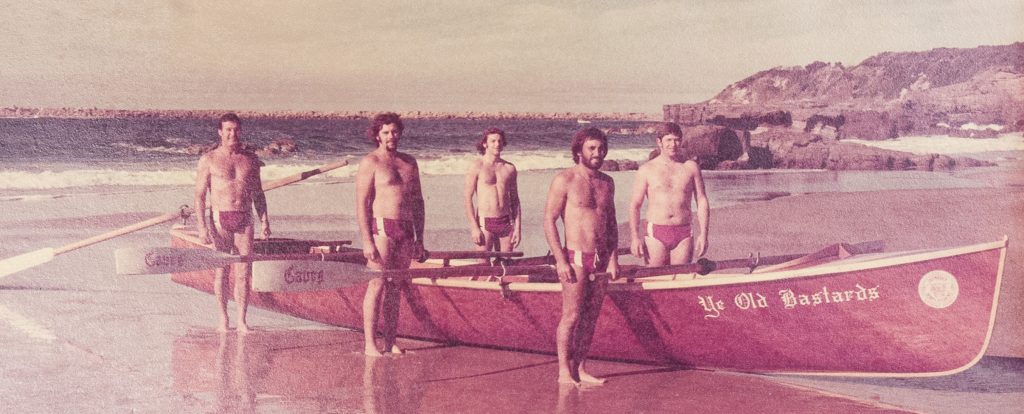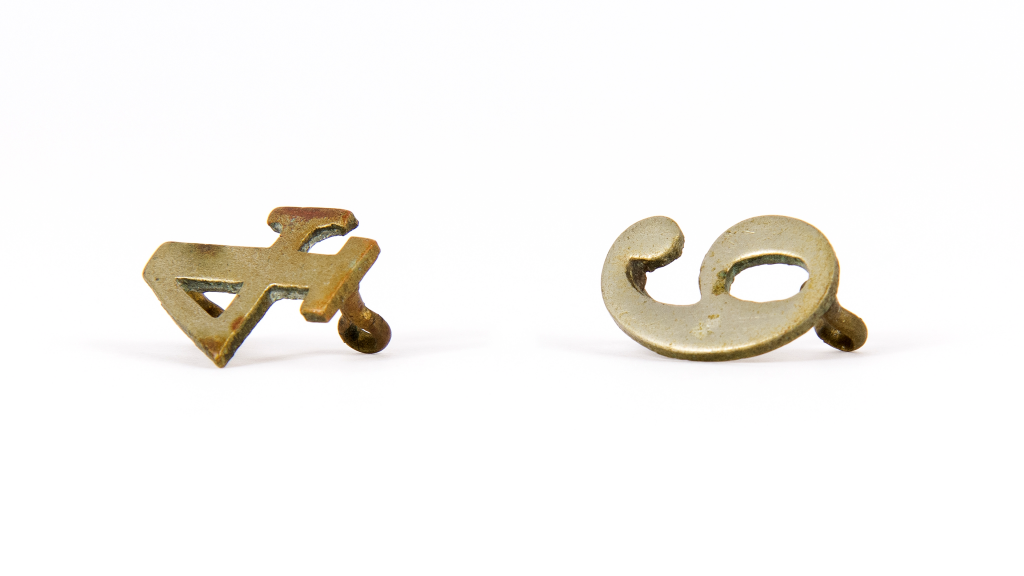
Small metal numbers were once used to signify the badge numbers of police officers. Using the small holes or loops, the numbers were hand-sewn to the high, stiff, and uncomfortable collar of an officer’s tunic. These particular numbers —two fours and a six—were found in the desk of Albert Edward Wallbank (1887-1953), an officer at […]
Read More…
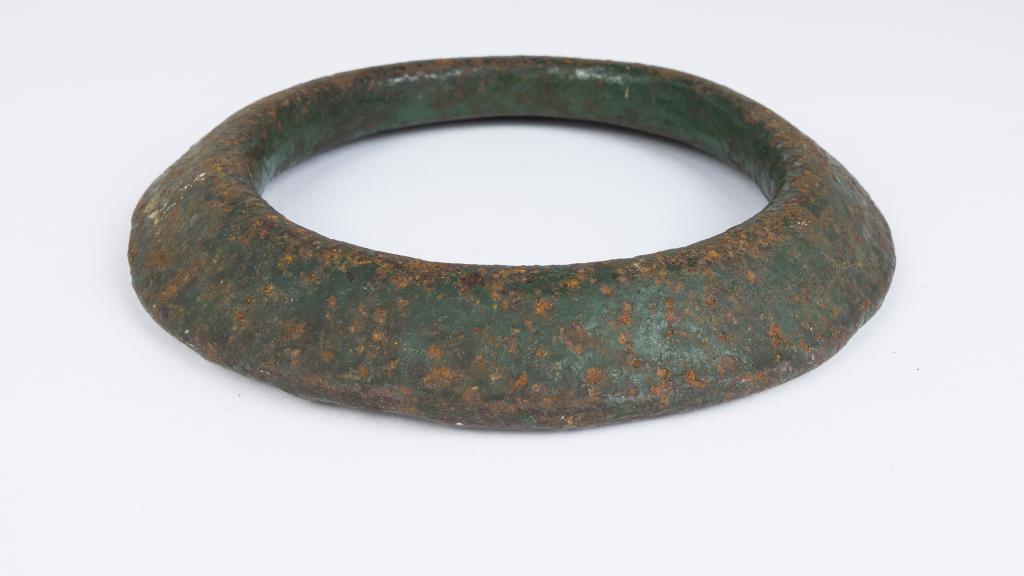
Although this object may look like a giant’s bangle it is in fact an integral part of the mostly forgotten game of clay–end quoits which dates back to the 14th century and was most closely associated with mining regions. The game involved the throwing of metal rings, the quoits, up and down a pitch with […]
Read More…

When we think of doomsday prepping, our imagination is likely to conjure images of eccentric characters in American documentaries, or, more recently, the stockpiling of food and supplies undertaken by many around the globe while we were cast into the initial throes of the COVID-19 pandemic. But here, in the Householders’ Handbook for Nuclear Warfare, […]
Read More…
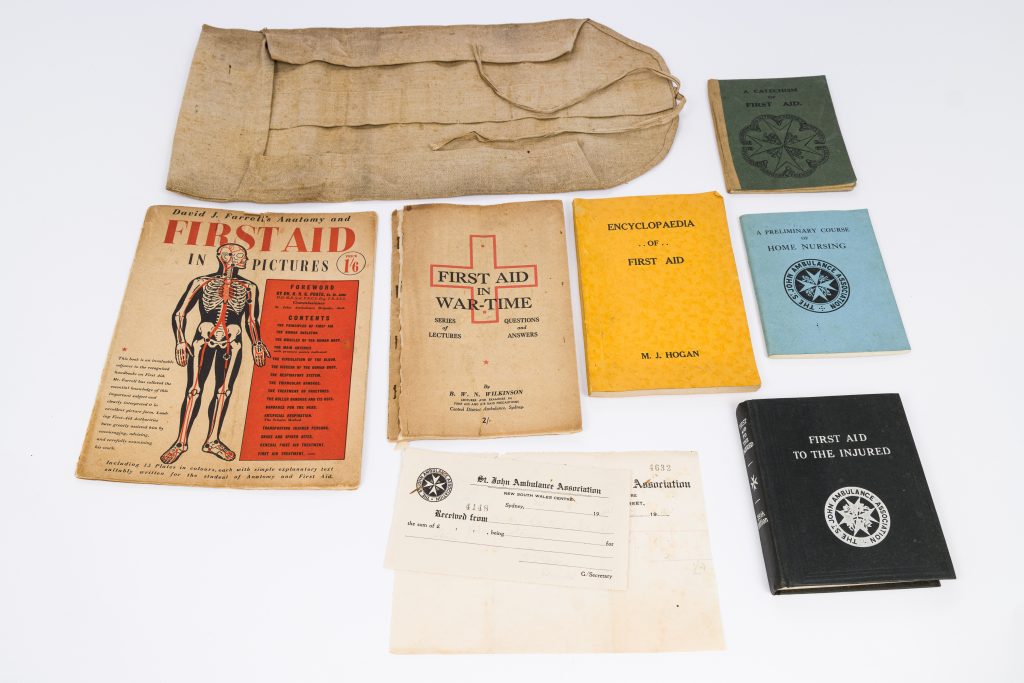
This collection of first-aid books was likely compiled and put together in the pictured hessian bag for distribution by a local Civil Defence Organisation, after WWII ended. These Civil Defence Organisations are considered something of a precursor to today’s State Emergency Services. There were intended to establish a local base of willing volunteers to serve […]
Read More…

Albert Wallbank served as a police constable in Carrington, Newcastle for seven years until March 1921, when he was transferred to Dudley, then a small seaside town. The ink stand pictured dates to the 1920s and is believed to have been gifted to Constable Wallbank. Perhaps it was a farewell gift from the Carrington community, […]
Read More…
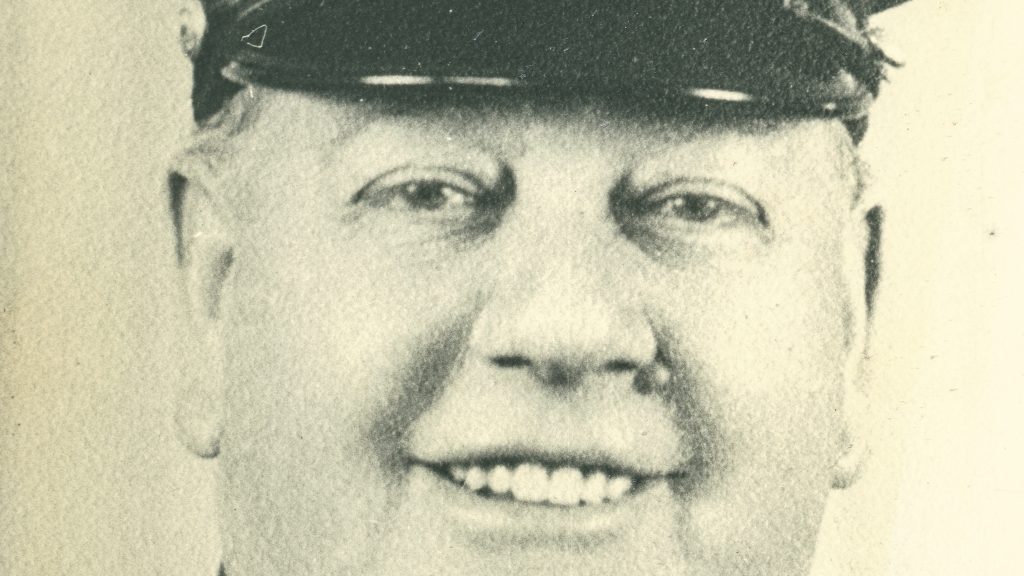
When Albert Edward Wallbank (1887–1953) joined the New South Wales Police Force in 1913 the role of a police officer was significantly broader than it is today. After serving at Carrington for seven years Albert was posted to Dudley Station in 1921 where he was to remain for 27 years until his retirement in 1947. […]
Read More…
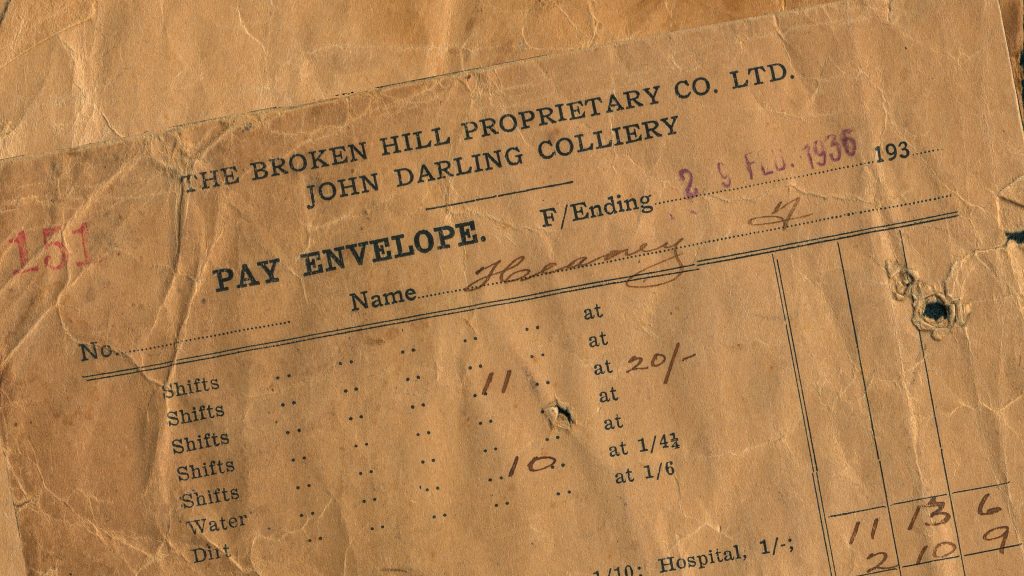
This envelope yields a range of stories about how work and company practices have changed over time. The John Darling Colliery at Belmont, the employer, opened in 1925, with the first coal recovered in 1927 but ceased production only 60 years later in 1987. The employee, F. Heaney is thought to be either Frank snr. […]
Read More…
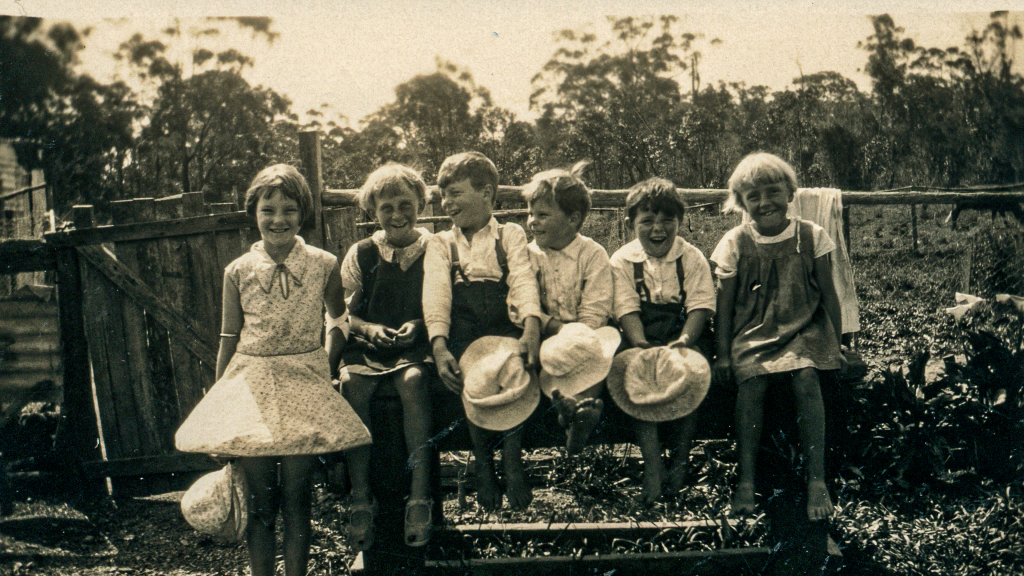
Today we live in a society that is saturated with images. Everyone with a smart phone has a camera in their pocket, ready to capture the world around them and share online in an instant. In the 1920s, photography was just starting to become more accessible to Australians. Cameras were getting lighter, cheaper, and easier […]
Read More…
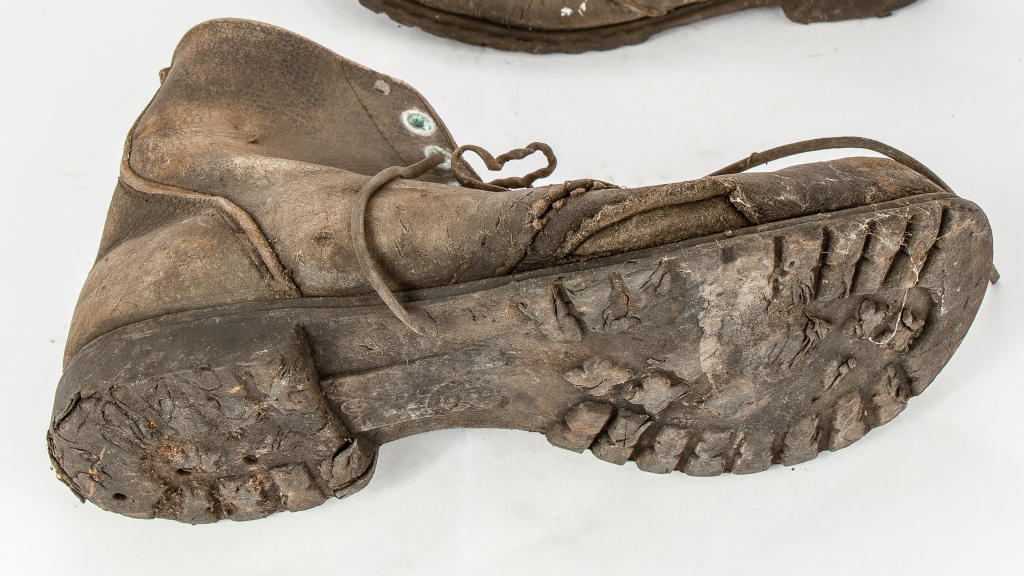
Leather worn through at the toes, broken laces, and soles coming apart. These boots were worn to the bitter end and seemed to serve their wearer well. But were they fit for purpose? Worn by a miner at the Stockton Borehole Colliery, at Teralba, Lake Macquarie, where coal was mined from 1901, boots like these […]
Read More…











